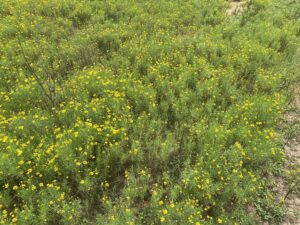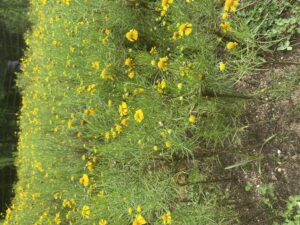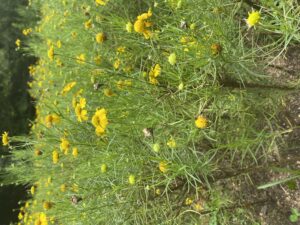Weed ID Wednesday – Bitter Sneezeweed
go.ncsu.edu/readext?795033
en Español / em Português
El inglés es el idioma de control de esta página. En la medida en que haya algún conflicto entre la traducción al inglés y la traducción, el inglés prevalece.
Al hacer clic en el enlace de traducción se activa un servicio de traducción gratuito para convertir la página al español. Al igual que con cualquier traducción por Internet, la conversión no es sensible al contexto y puede que no traduzca el texto en su significado original. NC State Extension no garantiza la exactitud del texto traducido. Por favor, tenga en cuenta que algunas aplicaciones y/o servicios pueden no funcionar como se espera cuando se traducen.
Português
Inglês é o idioma de controle desta página. Na medida que haja algum conflito entre o texto original em Inglês e a tradução, o Inglês prevalece.
Ao clicar no link de tradução, um serviço gratuito de tradução será ativado para converter a página para o Português. Como em qualquer tradução pela internet, a conversão não é sensivel ao contexto e pode não ocorrer a tradução para o significado orginal. O serviço de Extensão da Carolina do Norte (NC State Extension) não garante a exatidão do texto traduzido. Por favor, observe que algumas funções ou serviços podem não funcionar como esperado após a tradução.
English
English is the controlling language of this page. To the extent there is any conflict between the English text and the translation, English controls.
Clicking on the translation link activates a free translation service to convert the page to Spanish. As with any Internet translation, the conversion is not context-sensitive and may not translate the text to its original meaning. NC State Extension does not guarantee the accuracy of the translated text. Please note that some applications and/or services may not function as expected when translated.
Collapse ▲Bitter Sneezeweed is a warm season annual weed that has a bright yellow flower in June and July. It typically grows 8 to 20 inches tall, has narrow leaves, and can quickly spread if not addressed. Bitter sneezeweed thrives in over grazed areas and if it is heavily present, an evaluation of the grazing system will need to take place.
Ask yourself these questions to start:
- Have you taken a soil sample in the last three years?
- If you have taken a soil sample recently, did you apply lime and fertilizer per those recommendations?
- What measures do you take to ensure that your pasture is not overgrazed?
- What is your stocking rate? (# of animals per acre)
- Do you rotate pastures?
- How short is your grass when you rotate?
Bitter sneezeweed contains a toxin, that if consumed by grazing animals, can cause medical issues. It is not very palatable and is not typically consumed in large enough quantities to be of much concern. However, it can cause the milk and meat of lactating or animals being fed out to taste bitter.
Mowing can help reduce the number of seed produced that year but will not be enough for long term control. Hand pulling can be effective if the number of plants is small enough to be feasible. Chemical control with proper timing of application and use of herbicide per the label, should provide adequate control. Changes to the grazing system will also need to be implemented to see long term improvements.
Don’t wait until you see the flower this summer to start thinking about bitter sneezeweed control. Scout your pastures early and plan ahead. Call your local extension agent for more assistance.







